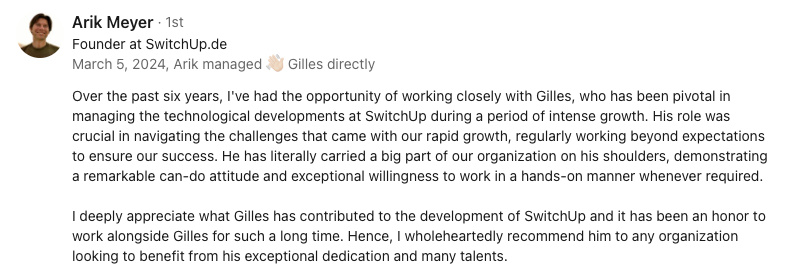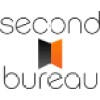Abstract:
The article emphasizes that leaving a tech job involves more than following checklists and sending template emails; the way you communicate, document, and engage during your exit has a lasting impact on your reputation and professional relationships. It warns against overly automated or rushed departures, which can create confusion, damage your legacy, and erode trust, while highlighting that subtle behaviors—like withdrawing from conversations or digital channels—are noticed and can spark rumors or oversight. Drawing from personal experience leading company transformations, the author notes that investing extra time in one-on-one conversations and thoughtful documentation smooths transitions, preserves strong references, and prevents knowledge gaps for successors. The article also cautions about pitfalls such as public venting, inconsistent messaging, oversharing reasons for leaving, and neglecting security obligations, all of which can cast a long shadow on your professional image. Ultimately, it advocates for balancing efficient processes with genuine connection, clear and consistent communication, and proactive knowledge transfer, as these small yet mindful actions ensure you leave on good terms and maintain valuable networks for the future.
Saying goodbye to a tech role can be more stressful than most admit. You want to finish well, close projects, and hand over work while keeping your good name. It’s tempting to lean on canned emails and checklists, yet that speed can strip away connection. When everything moves fast, small slips stay behind after you log out. The way you speak, what you document, and the tone in your last messages all shape memories of you. If you fear burned bridges or loose ends, you are not alone. Below are the quiet moments that matter most and the tweaks that guard both your reputation and your network.
Subtle reputation threats at the end of a tech role
When speed replaces connection
It’s tempting to automate every step of the exit: templates, forms, scripts. They save time and keep things tidy, yet too much automation feels cold. People end up seeing you as a ticket in a queue, and the company misses honest feedback. A quick escape may look efficient, but it turns your departure into a transaction. Blend automation with real conversation and you keep your reputation intact while helping the team learn.
When handovers cut corners
If the handover is rushed, chaos follows. Teams guess at passwords, timelines slip, and managers lose context. The most common headaches include:
- Forgotten credentials or missing knowledge
- Delayed projects caused by unclear instructions
- Confusion about ownership or process
- Blame quietly landing on the one who left
Managers often link these pains to the person who exited, making future references tricky. A mix of process and genuine engagement fixes most of these traps.
Investing extra time with personal meetings
While leading a company transformation, I learned that tools alone were not enough. I remember one particular one-on-one with an engineer who was anxious about inheriting a legacy system I built. We sat down over coffee (instant, not great, but it did the job), mapped out the handoff, and I shared the quirks that never made it into documentation. That extra hour saved days of confusion and secured strong references, n’est-ce pas? Sometimes, a real conversation is worth a dozen Slack threads.
Quiet signals: how withdrawal speaks louder than words
People notice the little things when you prepare to leave. Body language shifts, you speak less in meetings, or you drop out of chat channels. Your digital presence shrinks, and rumors fill the gap. Even small changes shape the story of your exit. And let’s be honest: the emotional weight of leaving—a pinch of anxiety, the uncertainty about what’s next—can make you want to disappear quietly. But going silent rarely works in your favor.
Why going quiet draws attention
Many HR teams report that these cues trigger outreach or extra oversight. Your reputation is not set only on the final day. The story often starts before you announce anything. Pulling back online can stir the opposite reaction from what you intend.
Digital silence and the suspicion it creates
Trying to slip out quietly by being less active usually sparks more curiosity. A silent exit can create more instability than a clear, steady presence. Communication, both what you say and how you show up, matters as much as any document or checklist.
Common traps in exit communication
Even the best intentions can backfire if you’re not careful with your words. Here are the most frequent communication mistakes I’ve seen (and, oui, sometimes made myself):
- Sarcastic comments in chat that read as criticism
- Poorly worded emails that linger in inboxes and screenshots
- Oversharing frustrations about why you’re leaving, fueling gossip
- Mixed messages across teams, leading to confusion and rumors
- Trying to be funny with irony or passive aggression—tone rarely lands as intended
Treat every message as if it may travel. Skip irony, keep language clear, and remember that digital platforms rarely carry tone the way we hope. It protects your reputation and spares the team extra drama.
Knowledge transfer pitfalls that damage your legacy
Why knowledge gaps haunt successors
The biggest complaint after someone leaves a tech team is missing documentation. Hidden gaps slow projects, frustrate new hires, and keep your name alive for the wrong reasons. Clear handover notes are the simplest way to help the team and guard your reputation.
My knowledge transfer checklistOver time, I’ve built a checklist to avoid these headaches:
- Create a shared folder with all relevant docs and credentials (never in your personal drive)
- Record short video walk-throughs for complex systems
- List open issues and who owns them next
- Double-check that all links and passwords work
- Share “unwritten rules” or gotchas that aren’t in the manual
This habit keeps relationships strong and transitions smooth.
Blaming others to fill the blanks doesn’t work
Hoping your successor will figure things out is risky. Managers often cite incomplete handovers when writing lukewarm references. I now build shared folders, standard procedures, and quick video walk-throughs for every exit. That habit keeps relationships strong and transitions smooth.
Protecting your network and references when leaving
Thoughtless reference requests can backfire
Treating reference requests like a checklist leads to bland or hesitant responses. Skip the generic blast email. A bit of context and gratitude makes endorsements warmer and longer lasting. For example, I once sent a rushed, copy-paste reference request to a former manager. The reply? A lukewarm LinkedIn blurb that barely mentioned my work. Lesson learned: a personal note and a reminder of shared projects go much further.
Appreciation builds better recommendations
Taking time to thank colleagues, mentors, and managers at the end often turns into stronger references and a tighter network. I once wrote a short, heartfelt note to a mentor who’d guided me through a tough release cycle. Months later, his glowing reference opened doors I hadn’t even knocked on. A sincere thank you travels far.
The risk of letting others shape your exit story
If key people hear about your departure second hand, rumors fill the space. Trust erodes and the narrative may twist. Share the news directly so the story stays accurate.
Consistent communication keeps your reputation safe
Make sure HR, managers, partners, and direct reports all get the same clear message from you. Consistency holds morale steady and keeps your reputation clean.
Subtle exit mistakes after you’ve given notice
Avoiding the “lame duck” trap during your notice period
Some employees check out as soon as they give notice. Morale dips and memories of their work fade fast. Staying engaged shows respect for the team and proves you finish what you start.
How oversharing in exit interviews can come back to haunt you
Exit interviews feel private, yet harsh words often travel. Stick to facts, stay constructive, and skip personal attacks. Your comments can echo far past your last day.
Avoiding security and IP mistakes that can haunt your exit
Overlooking credentials and devices
Legal obligations do not stop when you walk out. One forgotten login or an unreturned laptop can spiral into security trouble. Close every account, return every device, and review confidentiality rules before you leave.
Accidentally sharing code or knowledge
Passing a script or internal doc to a friend after you exit can trigger legal pain. Read your NDAs, audit your drives, and delete anything that does not belong to you. A quick check now avoids heavy issues later.
Spotting and fixing common exit mistakes
My self-audit checklist for a smooth exit
Before every departure, I run through a self-audit framework I built after a few early stumbles:
- Have I documented all key knowledge and project details?
- Is my story for leaving clear and future-focused?
- Did I return every device and close all accounts?
- Am I leaving on good terms, with solid references lined up?
- Did I keep my feedback professional and fair?
- Have I thanked the people who made an impact?
This checklist keeps me honest and helps avoid those “Oops, I forgot…” moments.
Balancing process with personal engagement
Automation and checklists save time, yet a good exit also needs a human touch. Blend fast processes with real talks, keep digital behavior polite, and scan for hidden gaps in documentation.
Why a careful exit shapes your future
A thorough exit shows you can handle change with structure and respect. It opens doors later, strengthens networks, and keeps your name positive in the market.
Leaving a tech role is more than ticking boxes. The small choices—real conversations, clear notes, a sincere thank you—shape how colleagues remember you. I’ve seen these habits pay off in unexpected ways: a reference from a former teammate landed me a dream contract in a small French town, far from the big city chaos. Sometimes, a careful exit is the best investment you can make in your future.














